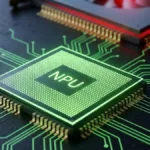The world of autonomous driving vehicles, which of late has mostly been dominated by news of self-driving Google Prius hybrids and a robotic Nissan Leaf on Japanese roads, grew a little more recently via American automaker Ford. The company recently unveiled it has converted one of its Fusion Hybrids into a research project for this developing technology.
This new project, according to Ford, is being done in conjunction with the University of Michigan and insurance company State Farm. It will result in helping pilot current and future sensing systems and driver-assist technologies so that Ford can “advance development of new technologies with its supplier partners so these features can be applied to the company’s next generation of vehicles.”

image via Ford
Ford vehicles, particularly the Fusion Hybrid, already host technologies that enable them “to park themselves, understand a driver’s voice commands, detect dangerous driving situations and assist with emergency braking.” The research project builds upon this, adding
four scanning infrared light sensors – named LiDAR (for Light Detection And Ranging) – that scan the road at 2.5 million times per second. LiDAR uses light in the same way a bat or dolphin uses sound waves, and can bounce infrared light off everything within 200 feet to generate a real-time 3D map of the surrounding environment.
The sensors can track anything dense enough to redirect light – whether stationary objects, or moving objects such as vehicles, pedestrians and bicyclists. The sensors are so sensitive they can sense the difference between a paper bag and a small animal at nearly a football field away.
Even as this research goes on, Ford is envisioning what the longer term will look like, which is mainly vehicles that “will have fully autonomous navigation and parking. They will communicate with each other and the world around them, and become one element of a fully integrated transportation ecosystem. Personal vehicle ownership also will change as new business models develop. The benefits include improved safety, reduced traffic congestion and the ability to achieve major environmental improvements.”
“The Ford Fusion Hybrid automated vehicle represents a vital step toward our vision for the future of mobility,” said Ford Executive Chairman Bill Ford in a statement. “We see a future of connected cars that communicate with each other and the world around them to make driving safer, ease traffic congestion and sustain the environment. By doing this, Ford is set to have an even greater impact in our next 100 years than we did in our first 100.”






